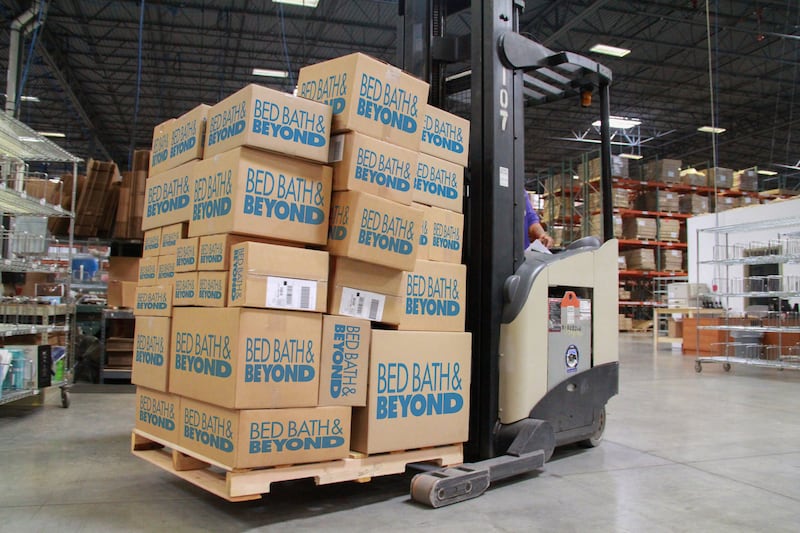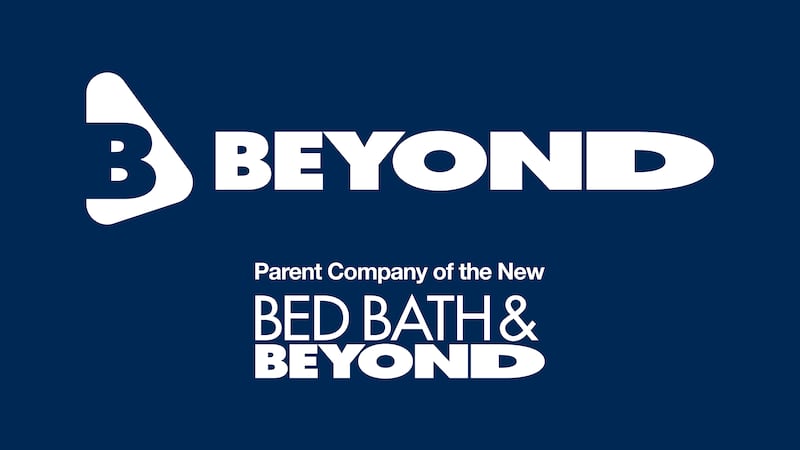
Photo courtesy of Beyond
For over two decades, Utah-based Overstock.com (now Beyond, Inc.) built a kingdom of e-commerce resilience and success thanks to an adapt-or-die business approach. Its latest, and perhaps most significant, transformation is a rebirth fueled by a unique and surgically executed acquisition of former retail juggernaut Bed Bath & Beyond earlier this year.
Overstock’s $21.5 million acquisition of Bed Bath & Beyond’s branding, intellectual property assets and customer data amid the company’s bankruptcy mirrors, in some ways, the launch of Overstock back in 1999. That’s when, in the shadow of the epic dot-com bust, Patrick Byrne and partners bought up failing online liquidator Discounts Direct and relaunched the business under the Overstock moniker.
The company would go on to evolve well beyond its early boundaries as a dead stock and returned merchandise purveyor, carving out a niche as a furniture and home goods retailer that found viable margins on new merchandise and a drop-shipping model well ahead of a later wave of online retail specialists.
But even as Overstock built a brand with widespread recognition, the burden of the name’s close association—by definition and legacy—with liquidation merchandise was almost impossible to retune.
“What we’ve known has been a little off is our brand’s association with home goods,” says Beyond CFO Adrianne Lee. “Talk to somebody on an airplane and most will say, ‘Oh yeah, I know Overstock.’ But what they probably don’t know is that it’s quality home goods for less.”
Coming off a pandemic-driven business boom, Lee says the company’s base business philosophy had put it in prime position to react nimbly to any opportunities to address its underlying branding challenges, should they arise.
“The core foundational principle is really simple,” Lee continues. “Businesses should operate to generate profit, and we should have a strong balance sheet. When things like Bed Bath & Beyond come along, we have the pocketbook and the balance sheet to consider taking action.”

Photo courtesy of Beyond
The delicate balance of dealmaking
Bed Bath & Beyond had been on Overstock’s radar as a potential acquisition target since well before the retailer pursued bankruptcy protections in April of this year. But, Lee explains, the previous circumstances hadn’t aligned in a way that made sense. Overstock was interested in Bed Bath & Beyond’s core branding and customer assets. But the sidebar brands and brick-and-mortar operations? Not so much.
Then, when Bed Bath & Beyond secured hundreds of millions in bridge financing in 2022, remade its slate of top executives, and backed away from a failed strategy of pushing in-house brands, it appeared the company was on track for recovery. But in spite of the fresh capital infusion and new leadership, a horrendous drop in revenues in late 2022—including a disastrous holiday shopping season—would prove to be the final straw in the company’s fiscal undoing.
“We had been closely monitoring the company’s activity and saw that an opportunity may be coming up. We started to hear banker talk about a potential bankruptcy and liquidation,” Lee says. “We got excited about the potential. We could acquire an iconic consumer brand that was synonymous with home products and drive it with our awesome, asset-light model.”
But as the window of opportunity opened, Lee says plenty of challenges came with the pursuit. For starters, Overstock’s goal was to take over the Bed Bath & Beyond branding and make it its own, but it was an approach that effectively flipped the typical acquisition model wherein the healthy company obtains and then subsumes those new assets under its own branding.
There was also the trick of accurately valuing the intellectual property of a once highly-regarded operation that had been floundering for years. And, of course, babysitting the deal through the hoops and intricacies of a court-supervised bankruptcy proceeding.
“We threw ourselves into the mix,” Lee says. “But in a process like this, there were a lot of twists and turns. The retail business world requires a maniacal focus on getting results. … We just turned that same focus on this acquisition.”
One of the biggest challenges, Lee says, was crafting a deal amid the bankruptcy liquidation sale that made sense for Bed Bath & Beyond’s creditors and the bankruptcy court but left Overstock with just the parts of the operation they wanted and the rest on the table.
“We thought we’d probably be competing against an offer for the bundle,” Lee says. “But we wanted to carve out the assets we wanted—just the IP, trademarks and customer list.”
Lee says she and the Overstock team brought in plenty of collaborators to parse the deal and leaned on data crunching to assemble some idea of valuation targets. Final numbers were also informed by what the alternative path, a ground-up Overstock rebranding, could cost the company.

Photo courtesy of Beyond
“Against the cost of a rebrand, $21.5 million seemed like a very reasonable offer,” Lee says. “We put in our bid and waited patiently, but that was alongside plenty of concern that someone would submit a larger, bundled bid.”
Adding to the intrigue of the deal environment was the background of a retail market that was (and is) in the midst of fierce macroeconomic forces, driven by ongoing inflation, a post-COVID-19 shift in consumer spending that’s favoring service industries, and a housing market—one of the primary drivers of the home goods sector—that’s been teetering thanks to skyrocketing mortgage rates.
This same assortment of circumstances also made it a prime moment for a transformative business move. On approving the sale during a June 27 New Jersey court hearing, United States Bankruptcy Judge Vincent Papalia said he was “gratified” to see a bidder emerge that would preserve Bed Bath & Beyond’s brand.
Overstock and Bed Bath & Beyond: the perfect pair
Assets acquired by Overstock in the bankruptcy auction included Bed Bath & Beyond’s website and domain names, trademarks, trade names, patents, customer database, loyalty program data and other brand assets related to the Bed Bath & Beyond banner.
All the analysis and groundwork that Overstock had put into assembling the Bed Bath & Beyond deal helped expedite its reaction time after closing the acquisition, and it stood up its new operations in full on August 1.
“This is a historic day for Bed Bath & Beyond and Overstock—and for the broader e-commerce industry,” said Jonathan Johnson, former CEO of Overstock. “Overstock has a great business model with a name that does not reflect its focus on home. Bed Bath & Beyond is a much-loved and well-known consumer brand, which had an outdated business model that needed modernizing.
“Through this rebranding, we’re breathing new life into Bed Bath & Beyond, positioning it as an asset-light, e-commerce retailer with an expanded home furnishings and furniture assortment. Think of it as Bed Bath & a much bigger, better Beyond.”
Per company financial reporting, that “bigger and better” includes some 600,000 new products since news of the acquisition deal was first reported in early July.
In an August Deseret News interview, Johnson noted the inventory expansion was aided by suppliers who previously were hesitant to open up their full product offerings to Overstock but have done an about-face under the new branding. Johnson also celebrated being able to move past some of the unfortunate customer perceptions that had followed the Overstock brand well past its days of being an inventory liquidator.
“We’ve ridded ourselves of a boat anchor of a name and ridded Bed Bath & Beyond of its previous boat anchor of a business model,” Johnson said.
When asked if the change to Bed Bath & Beyond redefines where Overstock falls in the online retail sector, Johnson said the change really serves to “just make us stronger in our current category.”
“We’ve always been in the business of making our customers’ dream homes come true,” Johnson said. “Now, we’re just offering more avenues to make dream homes come true."


